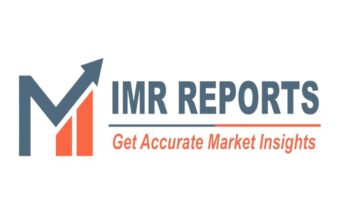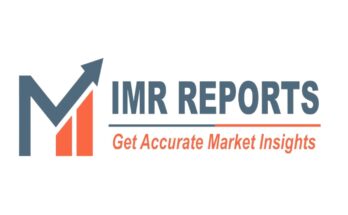Global Hydrocolloids Market has valued at USD10.86 billion in 2022 and is anticipated to project robust growth in the forecast period with a CAGR of 5.23% through 2028. The growing demand for thickeners and gelling agents from the pharmaceutical, personal care, cosmetics, and food & beverage industries in the emerging economies of Asia Pacific is driving the market growth. The upsurge in the consumption of hydrocolloid-based products in building materials, coupled with the rising demand from the cosmetics industry, is expected to further boost the market growth over the forecast period. Additionally, the high demand for thickening and gelling applications from the food and beverage sector is anticipated to be a major factor in driving sales.
The extensive range of functions performed by hydrocolloids in the food industry serves as a key driving force for the market. One of the primary functions that contributes to the widespread use of these products is their capability to bind with water and enhance the properties of food ingredients. The increasing demand for healthy food products is expected to translate into a growing demand for hydrocolloids, thereby fueling the growth of the global hydrocolloid market. Moreover, the convenience offered by processed food is also expected to have a positive impact on the market in the forthcoming years.
Hydrocolloids are commonly employed in numerous food formulations to enhance shelf-life and quality. Their extensive popularity in the food industry can be attributed to their ability to modify the rheology of the food system, such as viscosity and texture. These modifications have been known to enhance the sensory properties of food, making hydrocolloids a key choice as food additives to carry out specific functions.
While most hydrocolloids impart thickness and stickiness to aqueous dispersions, some biopolymers are capable of forming gels. The textural properties of food items, such as brittleness or elasticity, spread ability or longevity, and creaminess or chewiness, vary depending on the type of hydrocolloid used. Other sensory properties, such as mouthfeel, opacity, and taste, also depend on the specific hydrocolloid employed.
Hydrocolloids find applications in a wide range of food and beverage products as thickening, gelling, stabilizing, coating, and emulsifying agents. The hydrocolloids that primarily provide a thickening effect include methyl cellulose, hydroxypropylmethyl cellulose, carboxymethyl cellulose, guar gum, tara gum, konjac mannan, locust bean gum, gum tragacanth, and gum Arabic. On the other hand, commonly used gelling agents include carrageenan, agar, pectin, alginate, methyl cellulose, hydroxypropylmethyl cellulose, and gellan gum.
The surface activity of hydrocolloids plays a vital role in pharmaceutical formulations. Hydrocolloid-based polymeric materials are expected to gain popularity in targeted or smart drug delivery systems due to their advantages, such as enhanced absorption, reduced dosage, reduced side effects, prolonged drug release, and biodegradability. Advancements in targeted drug delivery systems, along with the increasing demand for hydrocolloids in pharmaceutical formulations, are projected to drive the market over the forecast period.
Download FREE Sample Report @ https://www.techsciresearch.com/sample-report.aspx?cid=2504
Hydrocolloids are gaining popularity in the personal care industry due to the growing consumer inclination toward natural products. In cosmetic applications, hydrocolloids are often used as replacements for synthetic chemicals with similar properties. The increasing consumption of hydrocolloids in conjunction with personal care and cosmetic ingredients is expected to drive market growth over the forecast period.
The soaring prices of hydrocolloids are a consequence of various market dynamics, such as substantial growth in seaweed feedstocks, energy costs, ocean freight expenses, product stewardship expenses, and other raw material prices. For instance, in the year 2008, the cellulose ethers production company Aqualon Group increased global prices for its pharmaceutical-grade methylcellulose and carboxyl methylcellulose by 5%. According to the company, this price hike was deemed necessary to invest in research and development activities and enhance production capacity.
Key Market Drivers
Growing Demand of Hydrocolloids in Food and Beverage Industry
Hydrocolloids, also known as food gums, are natural or synthetic ingredients used in the food and beverage industry to improve the texture, stability, and sensory attributes of products. These versatile substances function as thickeners, stabilizers, emulsifiers, and gelling agents, enhancing the overall quality and consumer appeal of food and beverage formulations. With their ability to modify the rheological properties of various food systems, hydrocolloids offer a wide range of functionalities that contribute to the desired characteristics of different products.
The global hydrocolloids market is witnessing significant growth, primarily driven by the growing demand for these ingredients across the food and beverage industry. As consumers become more discerning and seek unique and enjoyable food experiences, manufacturers are exploring innovative ways to meet these demands. Hydrocolloids play a crucial role in improving the texture and stability of food and beverage products, ensuring that they deliver the desired mouthfeel, viscosity, and thickness that provide a pleasant eating or drinking experience.
Not only do hydrocolloids enhance the sensory attributes of products, but they also contribute to their shelf life and overall stability. These ingredients prevent moisture loss, control syneresis (liquid separation from gel), and improve the resistance to temperature changes, thereby extending the freshness and quality of food and beverage formulations. By maintaining the desired attributes of products over an extended period, hydrocolloids contribute to consumer satisfaction and product differentiation in a highly competitive market.
The demand for hydrocolloids has surged due to the increasing need for diverse and innovative food and beverage products. Manufacturers are continuously developing new formulations, flavors, and textures to cater to evolving consumer preferences. Hydrocolloids enable the creation of a wide range of products, such as dairy alternatives, plant-based meat substitutes, gluten-free baked goods, and low-fat spreads. Their ability to mimic the properties of traditional ingredients while offering improved functionality and sensory attributes has made hydrocolloids indispensable in product development, leading to a growing demand for these ingredients.
In recent years, there has been a strong consumer shift towards clean label products and healthier food choices. Hydrocolloids are well-positioned to meet these demands as they are natural, plant-based ingredients that can replace synthetic additives and provide clean label solutions. Additionally, hydrocolloids offer functional benefits like fat reduction, sugar reduction, and improved nutritional profiles without compromising taste or texture. The health-conscious consumer segment is increasingly seeking products with reduced fat, sugar, and calories, leading to higher adoption of hydrocolloids in formulating healthier food and beverage options.
The growing consumption of processed food and convenience products globally is driving the demand for hydrocolloids. These ingredients are extensively used in a wide range of processed foods, including sauces, dressings, soups, beverages, bakery products, and ready-to-eat meals. Hydrocolloids enhance the stability, mouthfeel, and visual appeal of these products, making them more appealing to consumers. As the demand for convenient, ready-to-eat food continues to rise, the use of hydrocolloids in processed food applications is expected to grow, thereby driving the global market.
Growing Demand of Hydrocolloids in Pharmaceutical Industry
Hydrocolloids are widely used in pharmaceutical formulation development due to their multifunctional nature. They contribute to the stability, viscosity, and controlled release of active pharmaceutical ingredients (APIs). In addition to these benefits, hydrocolloids also offer improved solubility, bioavailability, and controlled release of APIs, making them crucial for the development of various drug delivery systems.
Hydrocolloids can be used to create encapsulation matrices and hydrogels that protect and deliver drugs in a targeted manner. These hydrocolloid-based systems find applications in transdermal patches, wound dressings, ophthalmic formulations, and mucosal drug delivery systems, among others. By providing sustained release and improved drug absorption, hydrocolloids enhance the effectiveness and efficiency of pharmaceutical products, driving their demand in the industry.
While hydrocolloids play a vital role in drug delivery, they also contribute to the stability and shelf life of pharmaceutical products. Pharmaceutical products often require long shelf lives to maintain their efficacy until consumption, and hydrocolloids help achieve this stability. They act as stabilizers, emulsifiers, and suspending agents, maintaining the homogeneity of liquid and semi-solid dosage forms. Furthermore, the addition of hydrocolloids helps protect sensitive drugs from environmental factors such as light, temperature, and oxidation, ensuring the product’s integrity and extending its shelf life.
Safety and compatibility are critical considerations in pharmaceutical formulations. Hydrocolloids are widely recognized for their safety and compatibility, being inert, non-toxic, and generally considered safe for human consumption. This makes them suitable for use in a wide range of pharmaceutical applications, including oral, topical, and parenteral formulations. Moreover, hydrocolloids offer advantages such as biocompatibility, biodegradability, and ease of processing, making them desirable options for the pharmaceutical industry. The high quality and safety assurance associated with hydrocolloids contribute to their increased usage and market demand.
The pharmaceutical industry operates under stringent regulatory guidelines and requirements. Fortunately, hydrocolloids are well-documented, and their use is supported by comprehensive regulatory data. This regulatory compliance allows pharmaceutical manufacturers to incorporate hydrocolloids into their formulations without significant hurdles or delays. By complying with regulatory standards, hydrocolloids ensure smooth product development and market access, further fueling their demand in the pharmaceutical industry.
Key Market Challenges
Variation in Prices of Raw Materials
Hydrocolloids are derived from both natural and synthetic sources. Natural hydrocolloids, such as agar, carrageenan, and alginate, are obtained from plant and seaweed extracts. These extracts undergo a series of extraction and purification processes to obtain the desired hydrocolloid properties. On the other hand, synthetic hydrocolloids are produced through chemical processes where specific polymers are synthesized to mimic the functionalities of natural hydrocolloids.
The production of natural hydrocolloids heavily relies on the availability and cultivation of specific crops or seaweed species. These crops or seaweed species require specific growing conditions and environments to thrive. Any disruption in the supply chain, such as adverse weather conditions, diseases, or environmental factors, can lead to a scarcity of raw materials, resulting in price fluctuations. Additionally, the cultivation of specific crops or seaweed species requires significant land and water resources, further adding to the complexity of the production process.
The dependency on natural resources makes the hydrocolloids market vulnerable to external factors influencing raw material availability and pricing. Changes in climate patterns, such as droughts or floods, can impact the growth and yield of crops or seaweed, affecting the overall supply of raw materials. Furthermore, diseases or pests that affect the crops or seaweed can also lead to a decrease in raw material availability.
The global hydrocolloids market is influenced by several factors, including changes in consumer preferences, evolving industry regulations, and geopolitical events. These factors contribute to market volatility, affecting the prices of raw materials. For example, increasing demand for specific hydrocolloids, driven by emerging market trends or new product developments, can lead to a sudden surge in prices due to limited supply. Conversely, changes in regulations or consumer preferences towards more sustainable or plant-based ingredients can also impact the demand for certain hydrocolloids, influencing their prices in the market.
Additionally, economic fluctuations and currency exchange rates can impact the cost of imported raw materials, further contributing to price variations. The cost of transportation and logistics, especially for raw materials sourced from different regions or countries, can also influence the final price of hydrocolloids in the market.
The unpredictability of market conditions adds complexity to the supply chain management and pricing strategies of hydrocolloid manufacturers. To mitigate the risks associated with raw material availability and pricing, manufacturers often rely on strategic sourcing and supplier diversification. By working with multiple suppliers and establishing long-term partnerships, manufacturers can reduce the impact of supply chain disruptions and negotiate more stable pricing agreements.
Furthermore, advancements in technology and research play a crucial role in the hydrocolloids market. Ongoing research and development efforts aim to discover new and innovative sources of hydrocolloids, as well as improve the extraction and production processes. These advancements not only contribute to the diversification of raw material sources but also enhance the efficiency and sustainability of hydrocolloid manufacturing.
In conclusion, the hydrocolloids market is influenced by various factors, including the availability of raw materials, changes in consumer preferences, industry regulations, and geopolitical events. The complex interplay of these factors contributes to market volatility and price fluctuations. To navigate the challenges posed by these factors, hydrocolloid manufacturers employ strategic sourcing, supplier diversification, and technological advancements to ensure a stable supply chain and competitive pricing in the market.
Key Market Trends
Growing Focus on Sustainability and Ethical Sourcing
In today’s consumer landscape, individuals are increasingly conscientious about the environmental and social impact of the products they choose to purchase. They are seeking not only transparency but also detailed information about the origin, production methods, and sustainability practices behind the products they consume. This heightened awareness has sparked a notable surge in the demand for hydrocolloids that are sourced sustainably and produced ethically.
Consumers are willing to pay a premium for products that align with their values, motivating manufacturers in the hydrocolloids industry to adopt sustainable and ethical practices. This shift has brought about significant changes in the hydrocolloids market, particularly in terms of sourcing practices. Natural hydrocolloids, including agar, carrageenan, and gum arabic, are now derived from renewable sources such as seaweed, trees, and plants.
To minimize environmental impact, the cultivation and harvesting of these raw materials have been increasingly subjected to sustainable practices. This includes responsible farming techniques, reforestation efforts, and the implementation of environmentally friendly extraction processes. Manufacturers have also taken measures to reduce water and energy consumption, waste generation, and carbon emissions throughout the entire production chain.
However, ethical sourcing in the hydrocolloids market goes beyond environmental sustainability. It also encompasses social responsibility. This means considering fair trade practices, labor rights, and community engagement. Ethical sourcing ensures that workers involved in the hydrocolloids supply chain are treated fairly and provided with safe working conditions. Moreover, it promotes community development initiatives, supporting local economies and contributing to the overall well-being of the communities from which hydrocolloid raw materials are sourced. These ethical considerations have become integral factors in the decision-making process for both manufacturers and consumers.
As consumers’ consciousness continues to grow, it becomes even more essential for manufacturers to provide detailed information about their sustainable and ethical practices. By doing so, they can meet the expectations of consumers who prioritize transparency and responsible consumption.
Segmental Insights
Type Insights
Based on the category of type, the gelatin segment emerged as the dominant player in the global market for Hydrocolloids in 2022. Gelatin, a versatile ingredient, finds extensive application in the production of various pharmaceuticals. It is utilized in wound dressings, blood volume substitutes, and homeostatic sponges, contributing to the advancement of medical treatments. With the burgeoning pharmaceutical industry in the U.S. and Canada, driven by the adoption of cutting-edge technologies, the market for gelatin is expected to witness significant growth in the coming years.
Xanthan gum, renowned for its unique properties, plays a crucial role in regulating the rheological characteristics of numerous food products. This polysaccharide excels in providing uniform brine distribution, exhibiting excellent solubility in both cold and hot water. Furthermore, it demonstrates exceptional stability in alkaline and acidic solutions, making it a favorable choice for various culinary applications. Additionally, xanthan gum showcases synergistic interactions with other hydrocolloid products like guar gum and locust bean gum, further enhancing its versatility and usefulness in the food industry.
Function Insights
The Stabilizer segment is projected to experience rapid growth during the forecast period. Stabilizers are vital components in various industries such as food, beverages, pharmaceuticals, and cosmetics. They play a crucial role in enhancing the texture, consistency, and stability of products by preventing separation, maintaining emulsions, and improving mouthfeel. These versatile additives have become indispensable in a wide range of applications, contributing to their dominant position in the hydrocolloids market.
One of the key factors driving the prevalence of stabilizers in the hydrocolloids market is the increasing demand for processed and convenience foods. In the production and shelf life of processed foods, hydrocolloids are often required to stabilize and enhance their texture. As consumer preferences shift towards convenient food options, the demand for stabilizers continues to experience significant growth. This trend not only reflects the need for improved product quality but also underscores the pivotal role that stabilizers play in meeting the evolving demands of the food industry.
Related Reports
Textile Dyes Market [2028]: Trends & Forecast
Chemical Tankers Market [2028] – Analysis, Trends, & Insights
Table of Content-Hydrocolloids Market
- Product Overview
1.1. Market Definition
1.2. Scope of the Market
1.2.1. Markets Covered
1.2.2. Years Considered for Study
1.2.3. Key Market Segmentations
- Research Methodology
2.1. Objective of the Study
2.2. Baseline Methodology
2.3. Key Industry Partners
2.4. Major Association and Secondary Sources
2.5. Forecasting Methodology
2.6. Data Triangulation & Validation
2.7. Assumptions and Limitations
- Executive Summary
3.1. Overview of the Market
3.2. Overview of Key Market Segmentations
3.3. Overview of Key Market Players
3.4. Overview of Key Regions/Countries
3.5. Overview of Market Drivers, Challenges, Trends
- Global Hydrocolloids Market: Demand-Supply Analysis
4.1. By Region
- Global Hydrocolloids Market Outlook
5.1. Market Size & Forecast
5.1.1. By Value
5.2. Market Share & Forecast
5.2.1. By Type (Gelatin, Xanthun Gum, Carrageenan, Alginates, Agar, and Others)
5.2.2. By Function (Thickener, Stabilizer, Gelling Agent, fat Replacer, Coating Material, Others)
5.2.3. By Application (Bakery, Confectionary, Meat & Poultry Products and Others)
5.2.4. By Region
5.2.5. By Company (2022)
5.3. Market Map
5.3.1. By Type
5.3.2. By Function
5.3.3. By Application
5.3.4. By Region
- Asia Pacific Hydrocolloids Market Outlook
6.1. Market Size & Forecast
6.1.1. By Value
6.2. Market Share & Forecast
6.2.1. By Type
6.2.2. By Function
6.2.3. By Application
6.2.4. By Country
6.3. Asia Pacific: Country Analysis
6.3.1. China Hydrocolloids Market Outlook
6.3.1.1. Market Size & Forecast
6.3.1.1.1. By Value
6.3.1.2. Market Share & Forecast
6.3.1.2.1. By Type
6.3.1.2.2. By Function
6.3.1.2.3. By Application
6.3.2. India Hydrocolloids Market Outlook
6.3.2.1. Market Size & Forecast
6.3.2.1.1. By Value
6.3.2.2. Market Share & Forecast
6.3.2.2.1. By Type
6.3.2.2.2. By Function
6.3.2.2.3. By Application
6.3.3. Australia Hydrocolloids Market Outlook
6.3.3.1. Market Size & Forecast
6.3.3.1.1. By Value
6.3.3.2. Market Share & Forecast
6.3.3.2.1. By Type
6.3.3.2.2. By Function
6.3.3.2.3. By Application
6.3.4. Japan Hydrocolloids Market Outlook
6.3.4.1. Market Size & Forecast
6.3.4.1.1. By Value
6.3.4.2. Market Share & Forecast
6.3.4.2.1. By Type
6.3.4.2.2. By Function
6.3.4.2.3. By Application
6.3.5. South Korea Hydrocolloids Market Outlook
6.3.5.1. Market Size & Forecast
6.3.5.1.1. By Value
6.3.5.2. Market Share & Forecast
6.3.5.2.1. By Type
6.3.5.2.2. By Function
6.3.5.2.3. By Application
- Europe Hydrocolloids Market Outlook
7.1. Market Size & Forecast
7.1.1. By Value
7.2. Market Share & Forecast
7.2.1. By Type
7.2.2. By Function
7.2.3. By Application
7.2.4. By Country
7.3. Europe: Country Analysis
7.3.1. France Hydrocolloids Market Outlook
7.3.1.1. Market Size & Forecast
7.3.1.1.1. By Value
7.3.1.2. Market Share & Forecast
7.3.1.2.1. By Type
7.3.1.2.2. By Function
7.3.1.2.3. By Application
7.3.2. Germany Hydrocolloids Market Outlook
7.3.2.1. Market Size & Forecast
7.3.2.1.1. By Value
7.3.2.2. Market Share & Forecast
7.3.2.2.1. By Type
7.3.2.2.2. By Function
7.3.2.2.3. By Application
7.3.3. Spain Hydrocolloids Market Outlook
7.3.3.1. Market Size & Forecast
7.3.3.1.1. By Value
7.3.3.2. Market Share & Forecast
7.3.3.2.1. By Type
7.3.3.2.2. By Function
7.3.3.2.3. By Application
7.3.4. Italy Hydrocolloids Market Outlook
7.3.4.1. Market Size & Forecast
7.3.4.1.1. By Value
7.3.4.2. Market Share & Forecast
7.3.4.2.1. By Type
7.3.4.2.2. By Function
7.3.4.2.3. By Application
7.3.5. United Kingdom Hydrocolloids Market Outlook
7.3.5.1. Market Size & Forecast
7.3.5.1.1. By Value
7.3.5.2. Market Share & Forecast
7.3.5.2.1. By Type
7.3.5.2.2. By Function
7.3.5.2.3. By Application




